Antelope Canyon Photos: Where Water Runs Through Rocks
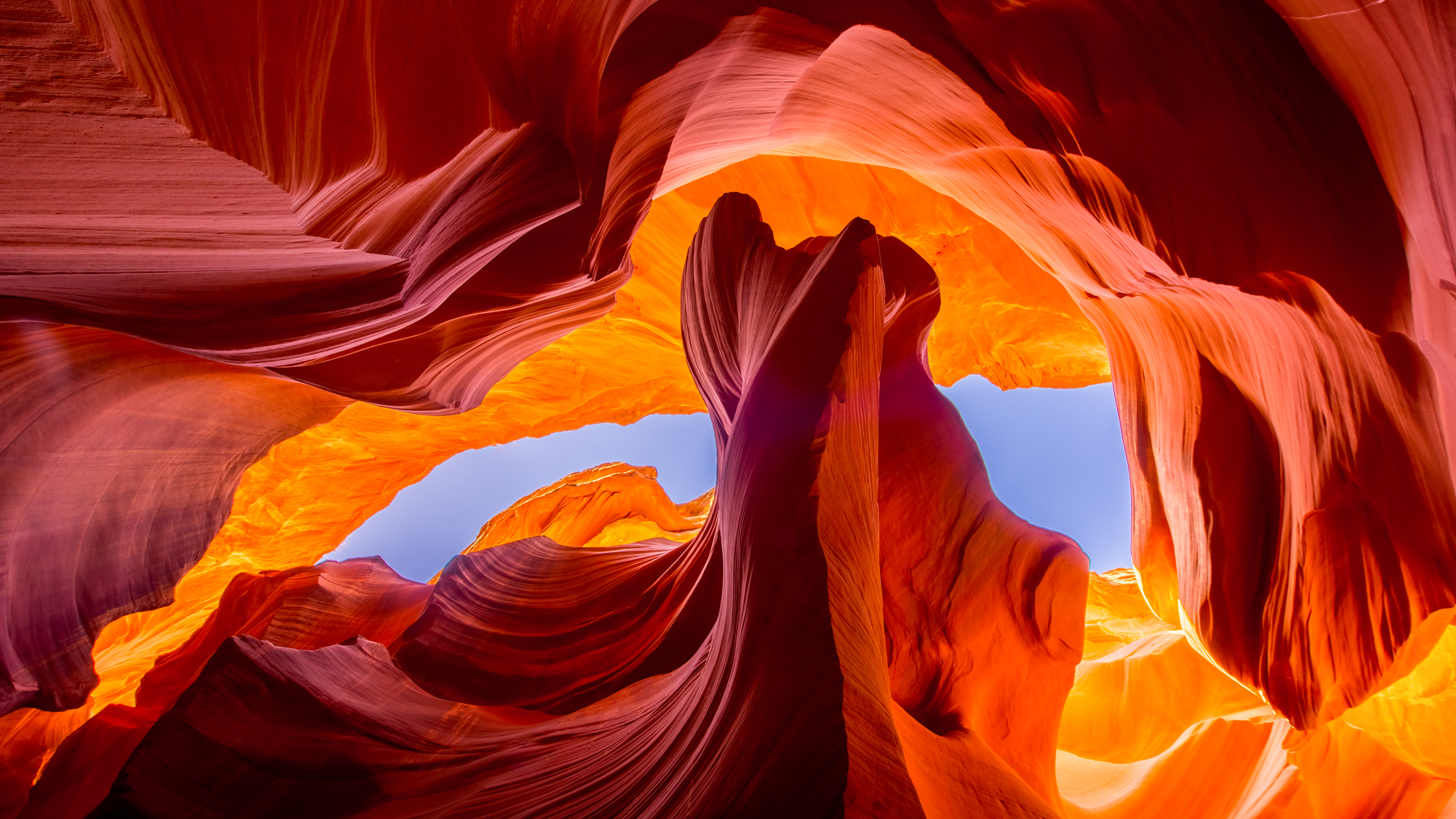
Glen Canyon National Recreation Area is located at the center of the Colorado Plateau and certainly ranks as one of the most beautiful and historically controversial areas under the guardianship of the National Park Service. When Glen Canyon Dam was completed in 1966, it backed up the water of the wild Colorado River to form magnificent Lake Powell, a reservoir capable of holding 24,322,000 acre feet of water. The waters of Lake Powell have created over 2,000 miles of shoreline along the Kayenta and Navajo Sandstone cliffs of Glen Canyon and resulted in the flooding of nearly 100 unique and beautiful side canyons.
Controversial dam
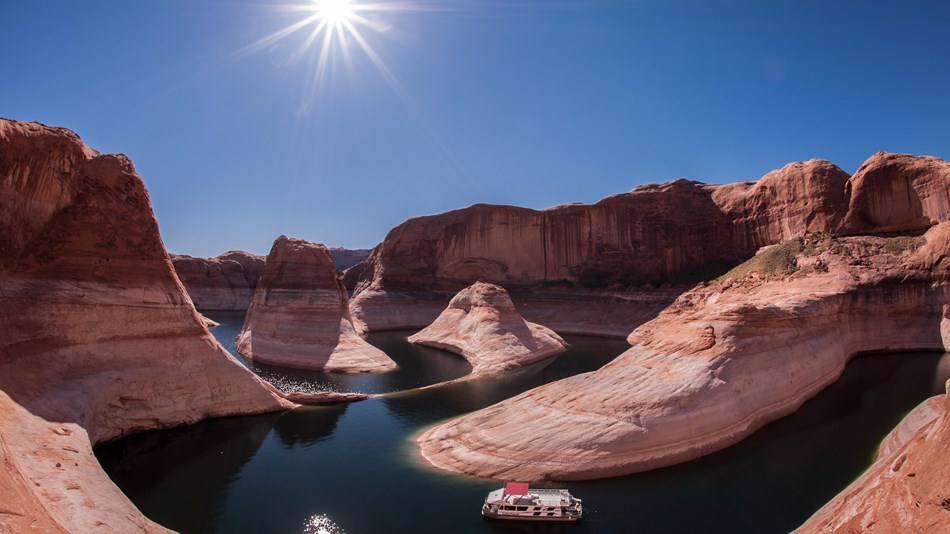
The controversy concerning Glen Canyon Dam and Lake Powell began when the dam was first proposed in the early 1950s. Conservationists and environmentalists vehemently argued against the dam's construction and the resulting flooding of beautiful Glen Canyon. Author Edward Abby championed the opposition to such dam construction and the inevitable destruction of the natural landscapes, archaeological ruins and historic sites in his famous 1968 book, "Desert Solitaire." The proponents of the dam and lake won the political debates, resulting in the submerging of Glen Canyon, many side canyons and the creation of Lake Powell.
Glen Canyon National Recreation Area
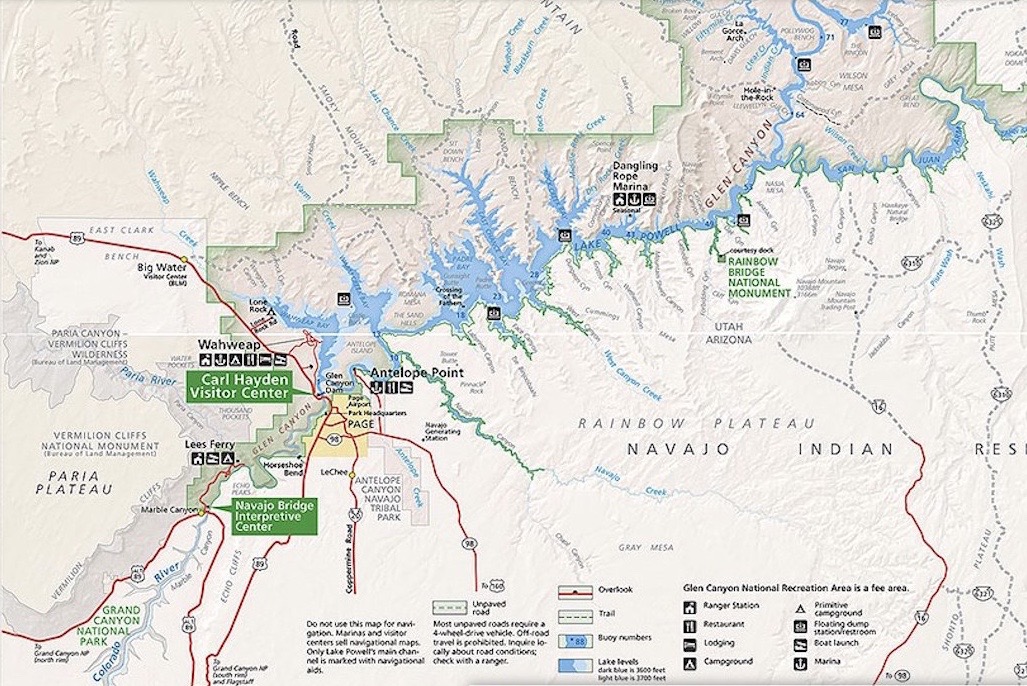
Glen Canyon National Recreation Area encompasses some 1.25 million acres (50,5857 hectares) of water and backcountry-related recreational areas. The recreational area stretches from the shores of historic Lees Ferry located below Glen Canyon Dam to the spectacular red cliffs of southern Utah — a distance of some 186 miles (299 kilometers). The land offers an endless display of dazzling vistas and endless geological phenomenon.
Horseshoe Bend
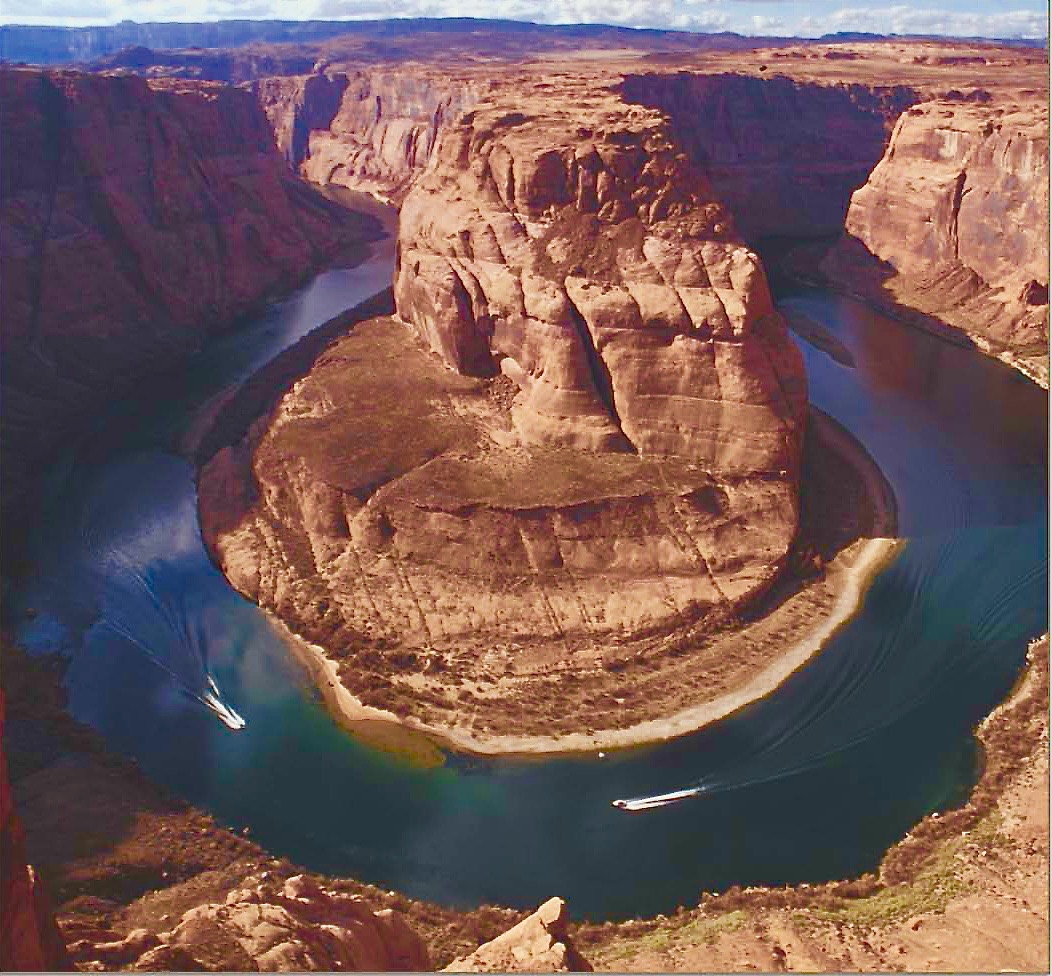
Horseshoe Bend is one of the unique geological phenomenon found within the Glen Canyon National Recreation Area. Located only 5 miles downstream from Glen Canyon Dam, Horseshoe Bend is, in geological terms, a horseshoe-shaped incised meander of the Colorado River. It is a classic and spectacular example of water following its natural path of least resistance.
The sheer cliff rock walls are made of dense Navajo sandstone and act as a natural barrier to the river flow, forcing the waters of the Colorado River to make a sharp turn and travel through softer rock. But Horseshoe Bend is not the only geological phenomenon in the area. Just a short 15 miles from the Lake Powell marinas is another spectacular geological treasure — a place simply known as Antelope Canyon.
Antelope Canyon
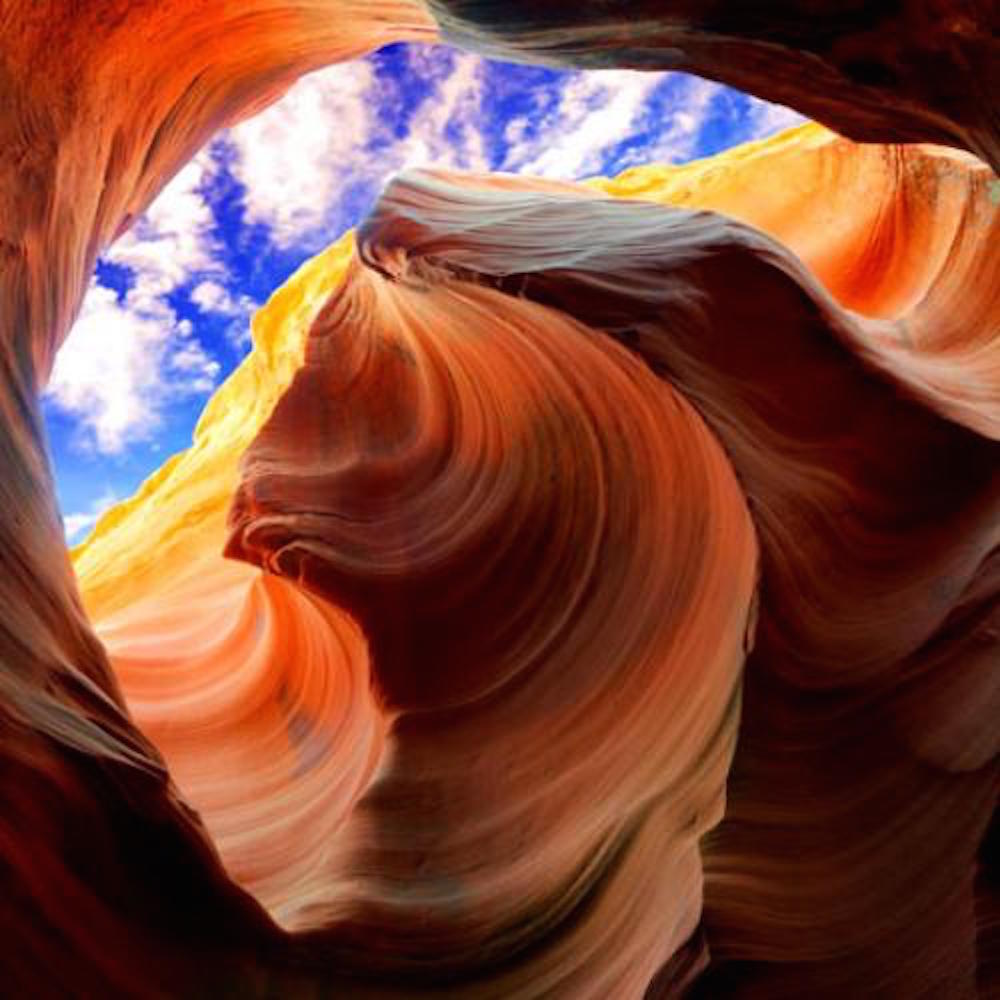
Antelope Canyon is a slot canyon — a geological curiosity of tiny canyons formed when water seeps its way into fissures of the bedrock. Slot canyons are most common in desert areas. They are the result of many millennia of weather extremes. Antelope Canyon was thus formed over thousands of years of flash flooding of the intermittent creek running through it, wearing away the Navajo sandstone rock-face before emptying into the Colorado River and now into Lake Powell.
During the long periods of drought, windblown sand would polish the narrow slot walls into a striated, swirling finish. Antelope Canyon is famous for its ever-changing play of light upon its walls and the flowing sandfalls that cascade into the depths of the slot canyon.
Exceptional view
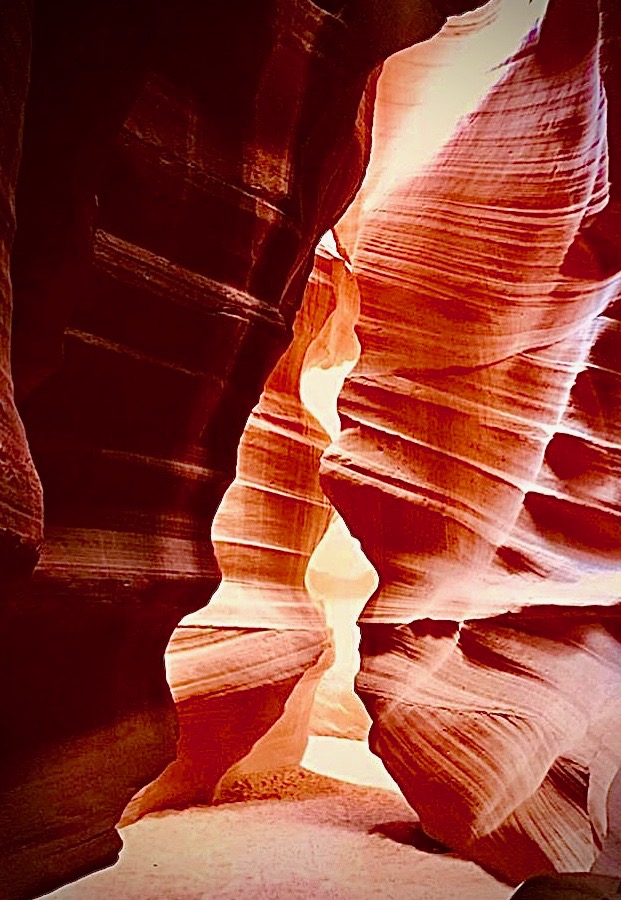
From the surface of the Earth, the fissure that opens across the Navajo sandstone is narrow and not exceptional to view. But first views can be deceptive. In the depths of the canyon, the walls can be 15 to 20 feet (5 to 7 meters) apart like that shown above and the slot canyon itself can be a 100 feet (30 m) deep. Navajo sandstone of Antelope Canyon was formed by aeolian depositions — sediment deposited by activity of the wind. Such depositions at Antelope Canyon began around 191 million to 174 million years ago during the Jurassic period. Iron oxide deposits were mixed with the windblown sands, resulting in layer after layer of varying shades of orange and red.
The canyon's heart
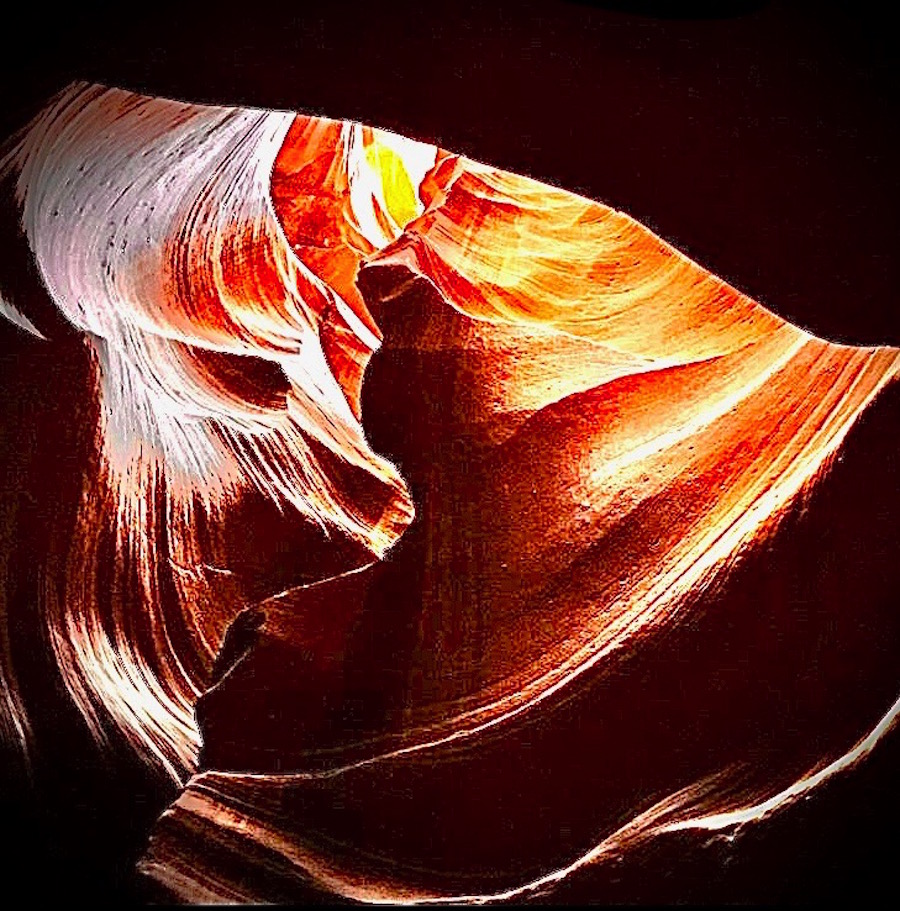
Rainwater near Antelope Canyon collects in an extensive basin above the beginning of the slot section. As gravity draws it downward toward Lake Powell, it picks up speed and sands while rushing into the narrow passageways of Antelope Canyon. Such annual and continual scouring of Antelope Canyon's walls mean the canyon is in constant flux, slowly changing after each flush of gushing water that passes through it. Unique shapes are formed within the slot canyon like the one shown above that is known as "the heart."
Where Water Runs Through Rocks
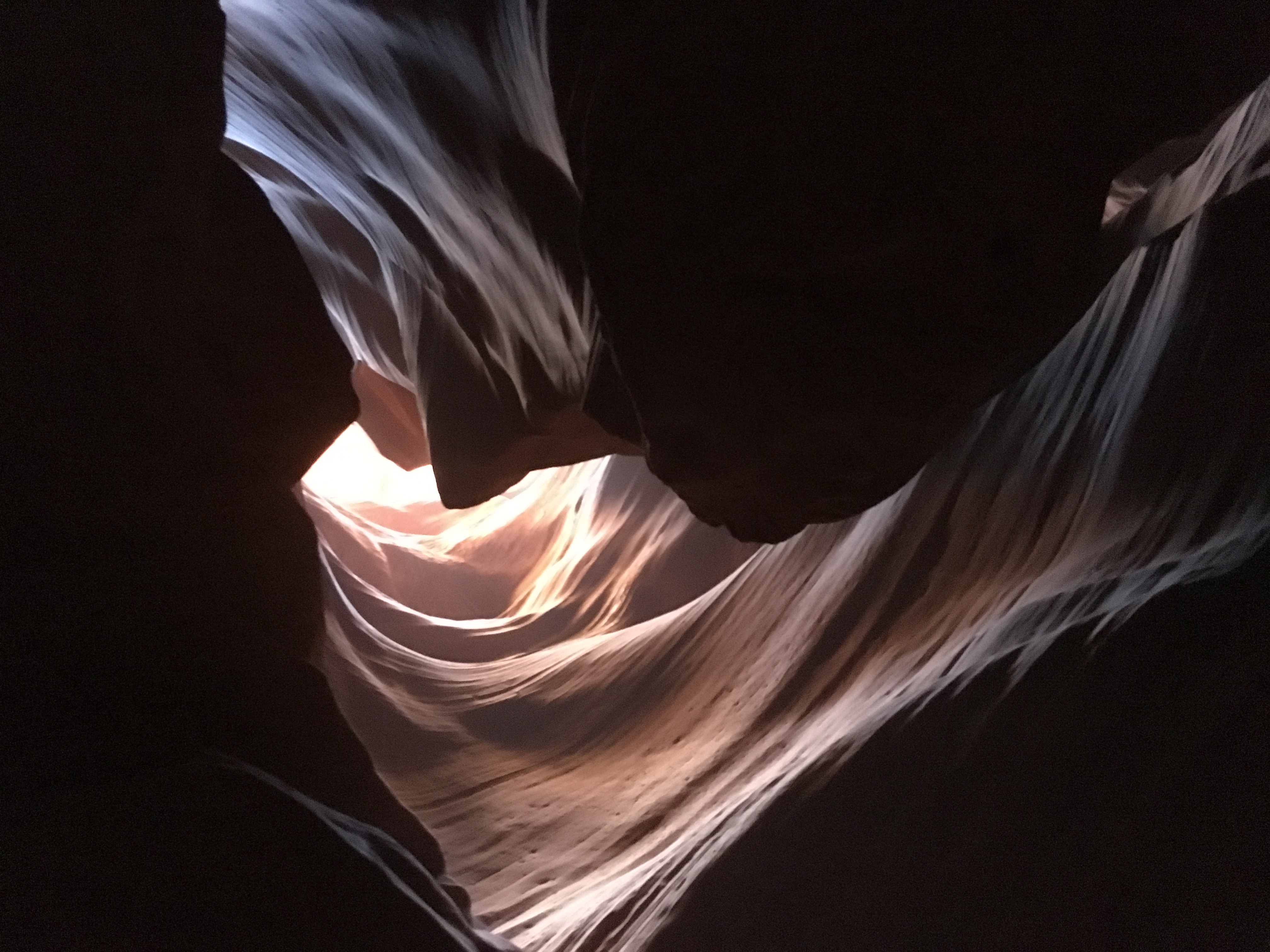
Antelope Canyon is actually divided into two sections — an Upper Antelope Canyon and a Lower Antelope Canyon. The Upper Antelope Canyon is the most famous and the easiest to access. The Navajo name for Upper Antelope Canyon is "Tsé bighánílíní," which means "the place where water runs through rocks."
Upper Antelope Canyon is only about 100 yards (91 m) in length. It is located at an elevation of 4,000 feet (1,219 m), and the walls of the Upper Antelope Canyon can rise some 120 feet (37 m) above the normally dry streambed. Thousands of tourists visit Upper Antelope Canyon each year, partly because it is an easy, flat walk through the slot canyon.
The Crack
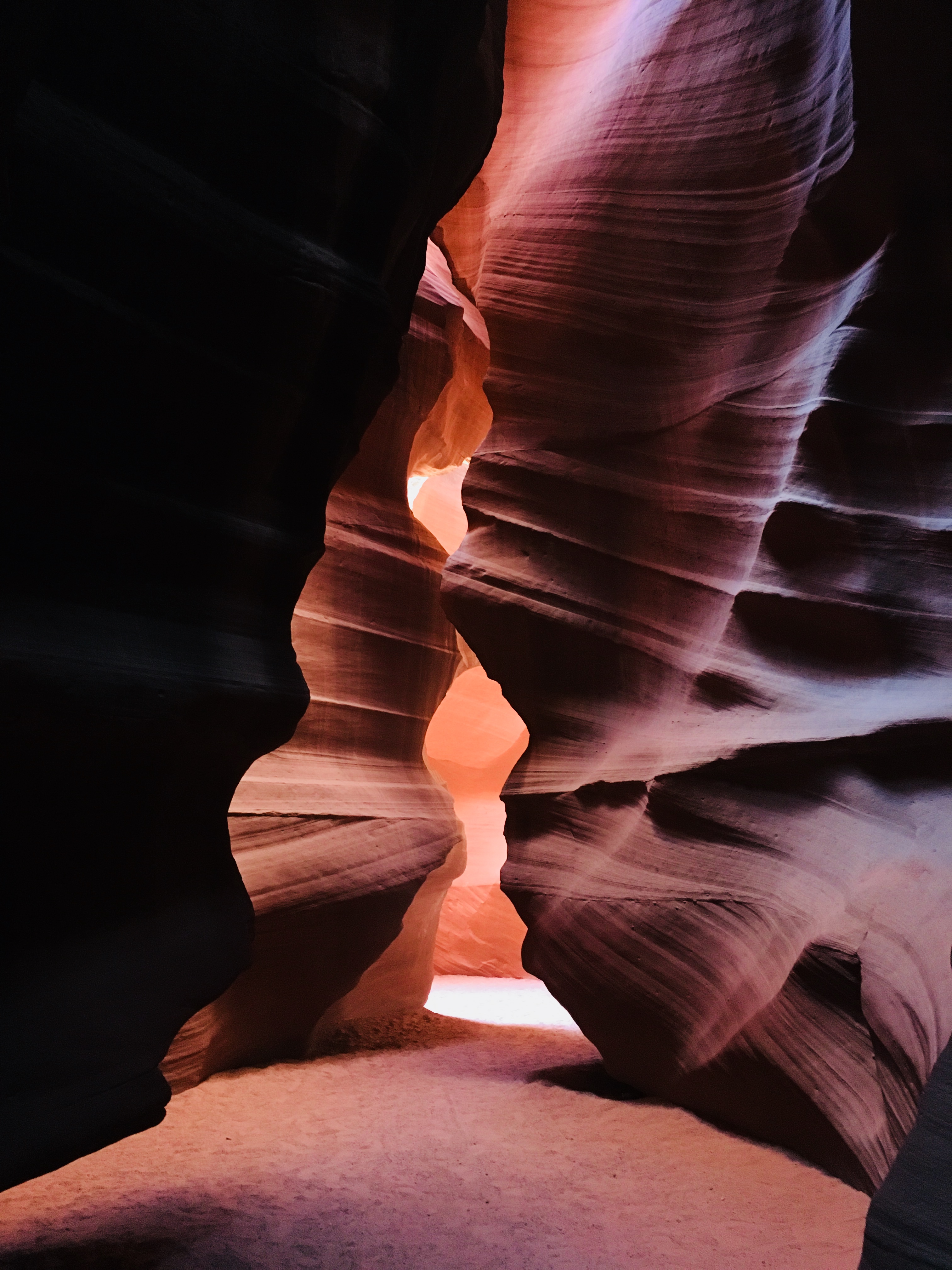
Upper Antelope Canyon, also affectionally known as "The Crack," is famous for the wave-like structure of the canyon's walls. Upper Antelope Canyon is also known for the glorious light beams that penetrate into the depths of the canyon in the summer months between March 20 and Oct. 7. The summer light beams that radiate into Upper Antelope Canyon result in this slot canyon being the most photographed slot canyon in the southwestern United States.
The Corkscrew
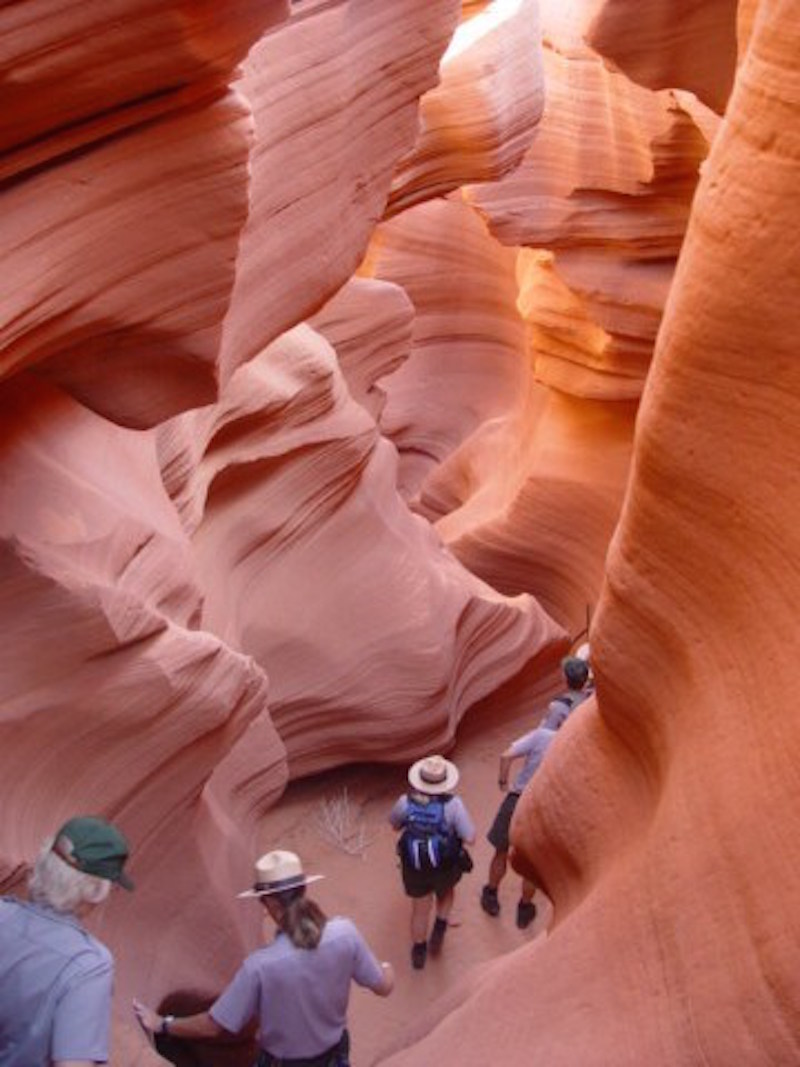
Some 4.5 miles (7 km) northwest of Upper Antelope Canyon is Lower Antelope Canyon — a slot canyon 1.1 miles (2 km) in length. The biggest difference between the two slot canyons is the size of the canyon floors. The upper canyon is wider at the bottom, while Lower Antelope Canyon is much smaller at the bottom, almost V-shaped.
The Navajo name for Lower Antelope Canyon is "Hasdestwazi," meaning "spiral rock arches" and is sometimes called "The Corkscrew." Entering the lower canyon requires a short walk over uneven rock surfaces, before descending a series of five sets of stairs, shown above. Because of the challenging stairs, Lower Antelope Canyon usually sees fewer tourists than the upper canyon. But the fact remains that both Upper Antelope Canyon and Lower Antelope Canyon are a part of a complex, multi-faceted ecosystem with multiple drainage streams that transport local moisture runoff into what is now Lake Powell.
Origin story
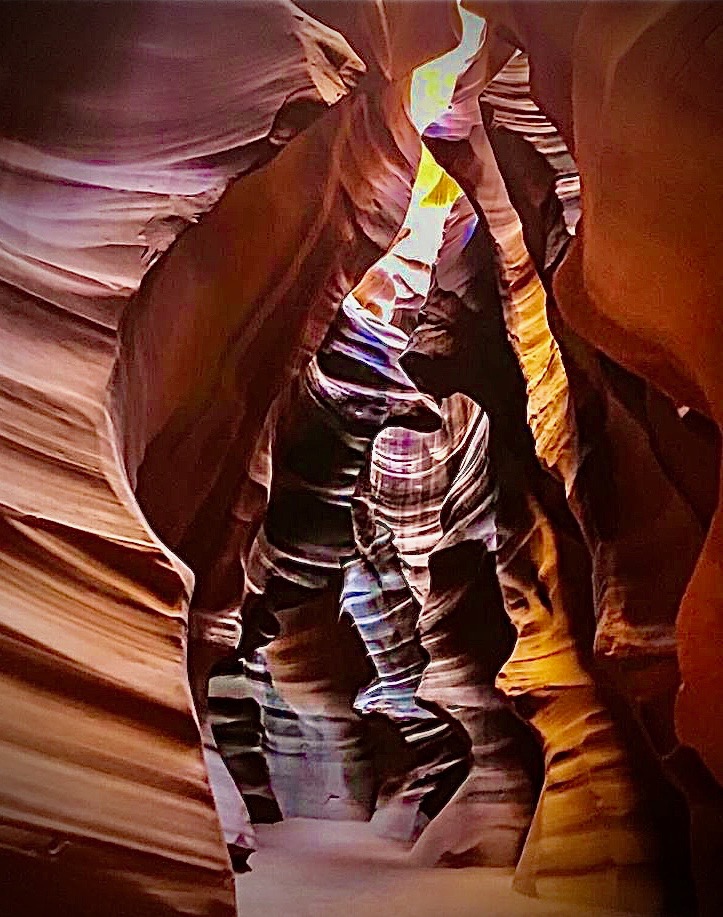
The exact story of the discovery of Antelope Canyon seems to be lost to history. One Navajo tradition holds that a group of Navajo refused to join the "Long Walk" of 1864 and took refuge in Antelope Canyon, where spiritual beings watched over them.
Another story suggests that a young Navajo girl, while herding her sheep, walked into the slot canyon and was amazed by the shafts of light she saw there. For a fact, we know the canyon was first documented by a Utah photographer who began publishing photos of Antelope Canyon in the 1930s.
Canyon tours
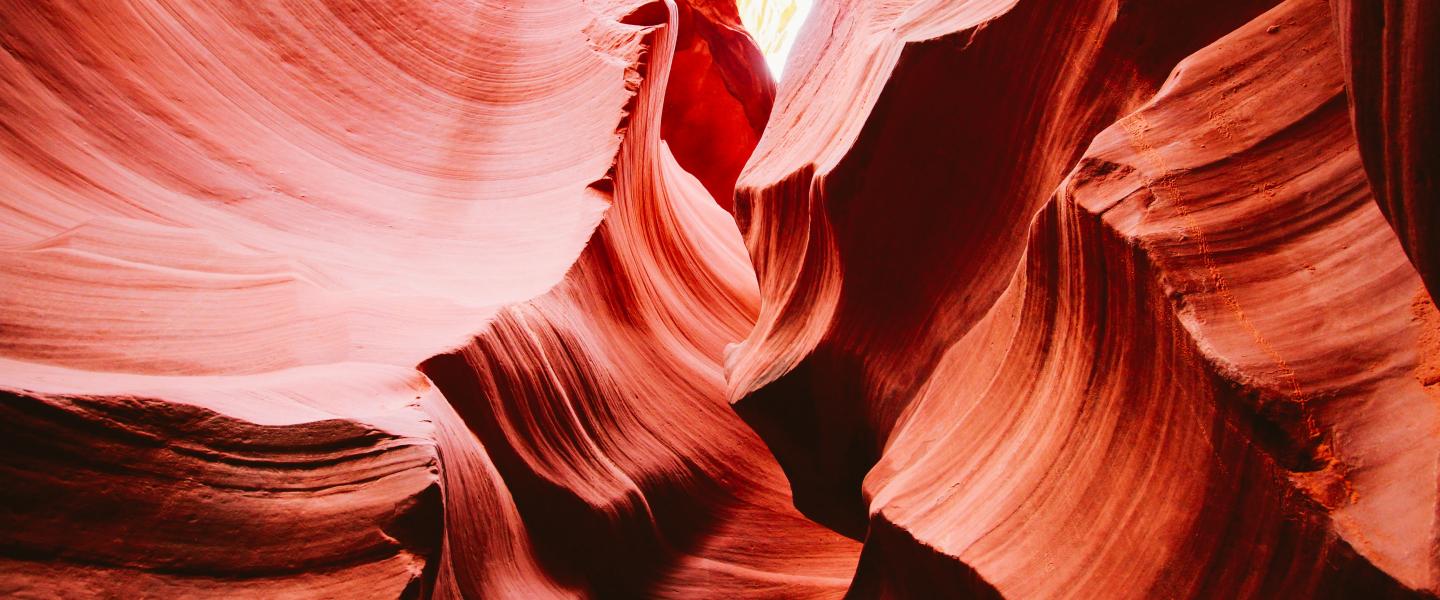
Access to the slot canyon of Antelope Canyon is today under the control of Navajo Nation. Authorized tour companies provide a variety of adventures for visitors to see and experience both the Upper and Lower Antelope Canyon. During the summer months, demand for the tours can be heavy and early morning tours are best to avoid the large crowds that at times gather.
Eighth Wonder of the World
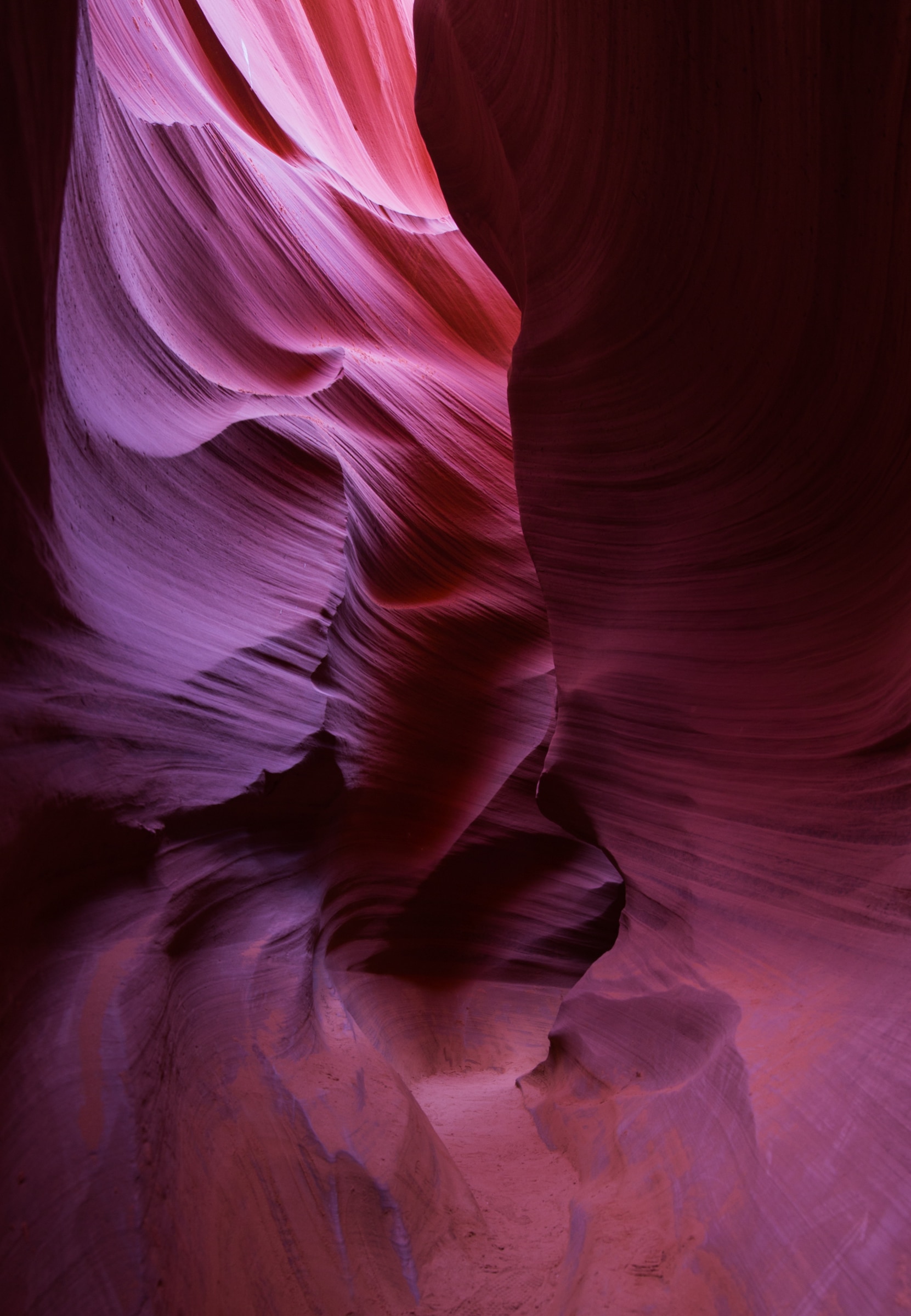
Antelope Canyon is believed to have received its name from the herds of pronghorns, Antilocapra americana, that once grazed along the canyon's rim during the winter months. The incredible slot canyons that laid below the grazing herds have been described by modern-day visitors as the Eighth Wonder of the World. "Absolutely breathtaking," "awe-inspiring" and "words can't describe it" are all comments from those who have seen and experienced this geological jewel and treasure of the Glen Canyon National Recreation Area.
- In Photos: Stunning Views of Grand Canyon National Park
- Chaco Canyon Photos: Amazing Ruins from an Ancient World
- In Photos: Underwater 'Lost City' Reveals the Beauty of Geology
Originally published on Live Science.
Sign up for the Live Science daily newsletter now
Get the world’s most fascinating discoveries delivered straight to your inbox.










